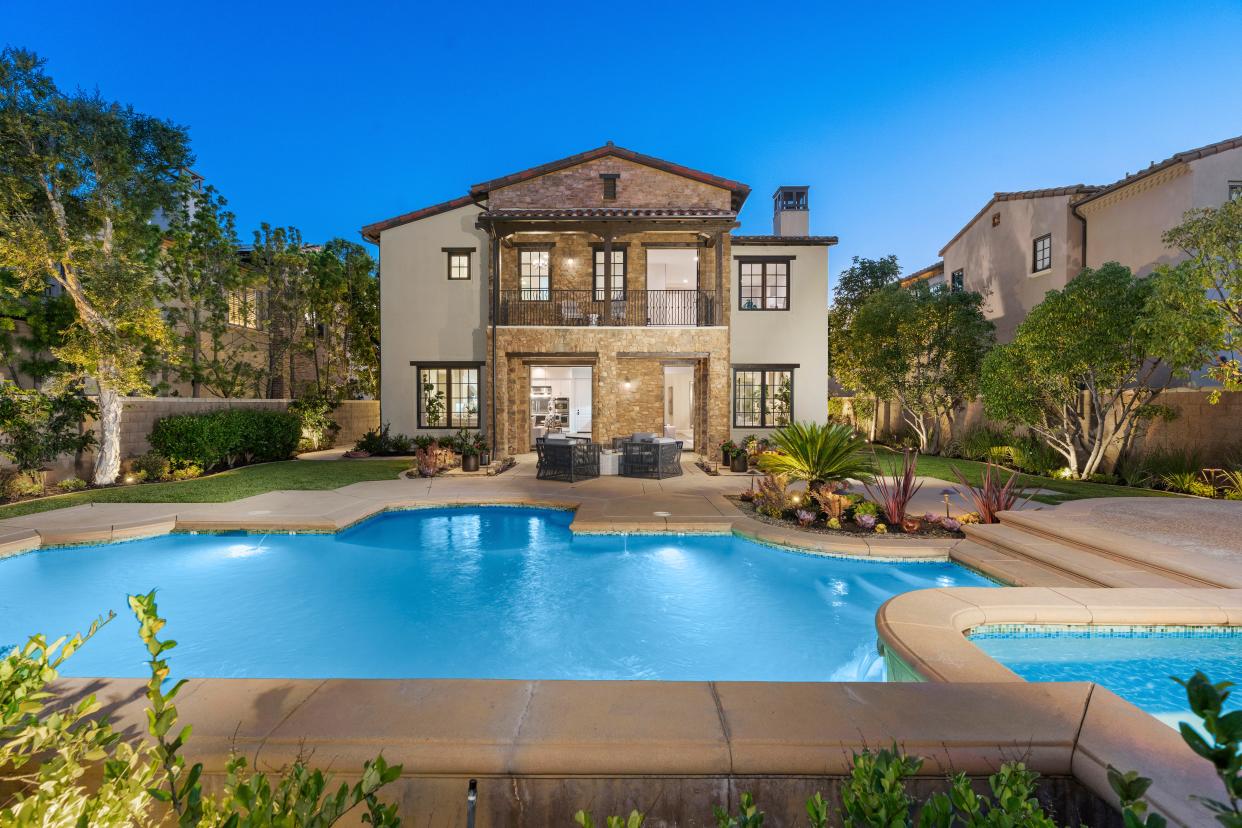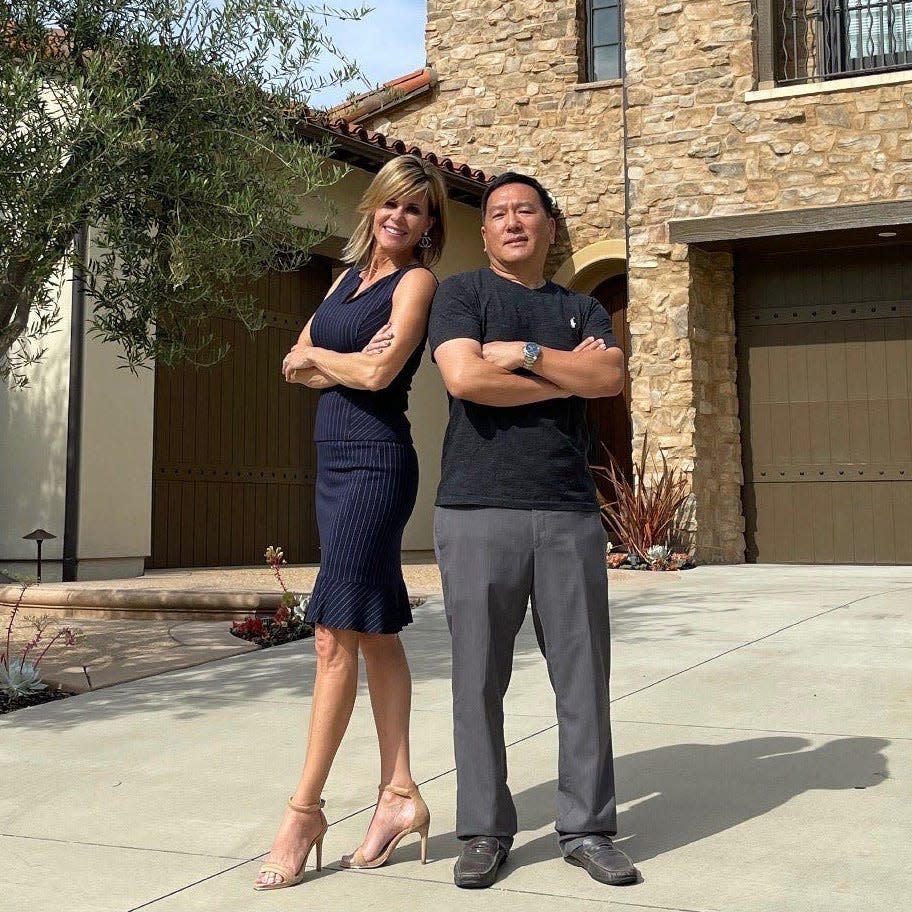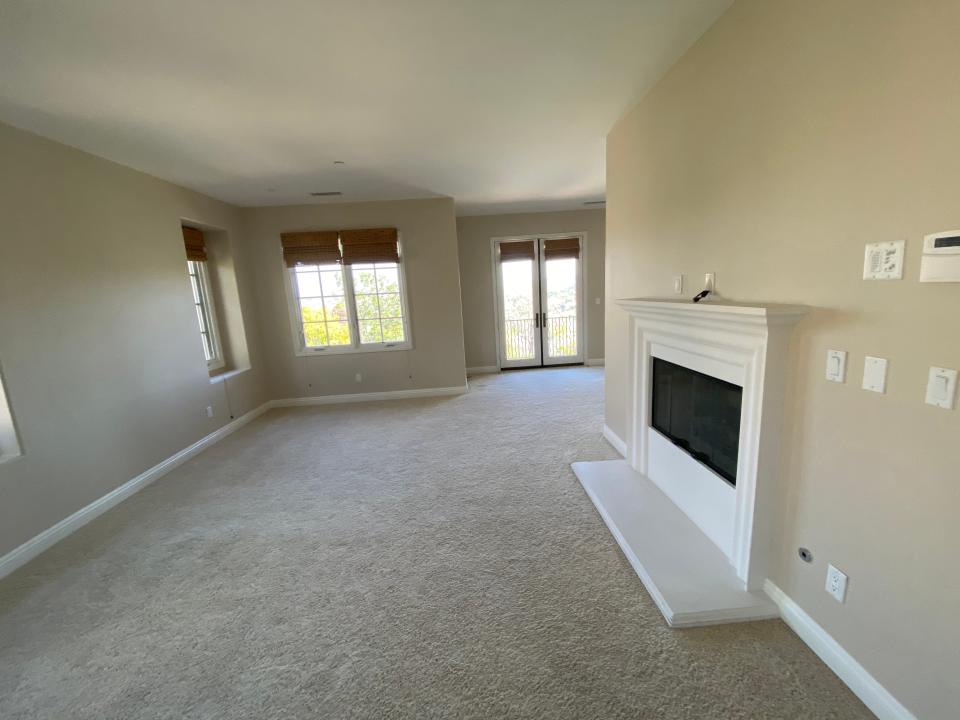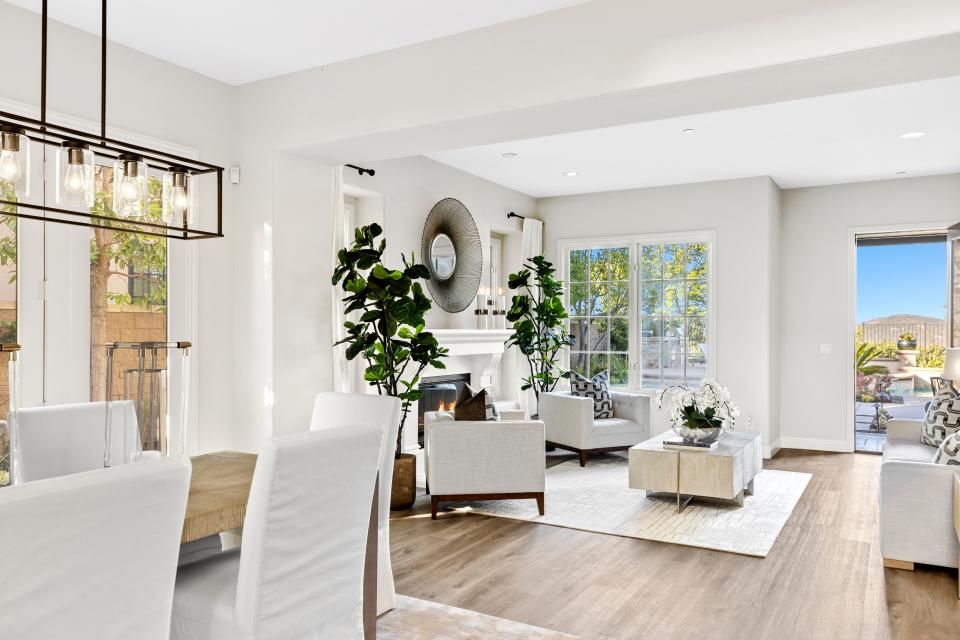Luxury home sales soar, even helping houses that languished on the market for months

Since the start of the pandemic, Americans looking to buy a home have struggled with bidding wars and a limited number of houses for sale.
But one area of the cutthroat real estate landscape is improving. It's the luxury segment, where listings are up and homes are selling at a rapid clip.
The demand is so great that even "white elephants" – high-end homes that sat on the market for months before the pandemic began – are selling quickly as their owners willingly splurge on remodeling projects to spruce them up. The motivation is the hot market for premium properties, and an urge to make shabbier ones more alluring for buyers.
At a time of unprecedented shortages of available homes, improving sales of larger, high-end properties means that a few people are moving up the price ladder, and putting a limited number of less expensive houses on the market.
"When larger homes sell, it means it is freeing up inventory in mid-market homes," says Lawrence Yun, chief economist for the National Associated of Realtors. "There is a ripple effect, but it is small."
For owners willing to spend thousands to make high-end properties "move-in ready," those efforts are now often rewarded when buyers pay top dollar.

JoJo Romeo, a real estate agent in Irvine, California, who specializes in luxury properties, has managed 12 such projects for sellers in the last year.
In many cases, they were "white elephants."
“Clients will say, ‘Oh the market’s really good. I want to get top dollar for my house,'” Romeo says. “And I say, ‘You’re not going to because it’s not turnkey.’”
Edward Li decided in June 2019 that he wanted to sell the five-bedroom home he’d owned with his parents in Irvine, California, for 13 years.
He listed the 3,600-square-foot property, which has a pool and is in the gated community of Turtle Ridge, for $3.49 million.
Eight months later, Li still had no offers.
That’s when Romeo contacted him.
“She’s like, ‘What’s the situation with this house?'" recalls Li, an engineering business consultant. She then insisted that he remodel.
"'We're catering to a high-end market where buyers just don't want to fix anything,'” he remembers her saying.
Li agreed. The home had been rented for over a decade and had a stain on the carpet and beige walls.


After a $150,000 renovation, Romeo re-listed the home in July. It received three offers within the first week, then sold for $3.55 million.
A confluence of trends is fueling the revived demand for high-end homes like Li's. Affluent Americans want more space as they work, learn and entertain from home. They also have the means to buy, helped by higher savings, historically low mortgage rates and soaring stock prices that have padded their wealth and allowed them to offer large amounts of cash for new homes.
“There's this heightened awareness of home and the high-net-worth individuals who were spending their time traveling are suddenly spending a lot of time at home,” says Diane Hartley, president of the Institute for Luxury Home Marketing in Dallas. “And now they want their homes bigger and better.”
At the start of the pandemic, stay-at-home orders prevented buyers from house-hunting and discouraged sellers from listing properties. But that changed in May 2020, when online, socially distanced viewings started taking off.
In the months that followed, demand far outpaced supply, and U.S. housing gained about $2.5 trillion in value for 2020 – the most in a single year since 2005, according to a Zillow analysis.
"People view real estate in a more special way than before and that is a change in preference we are seeing in all segments of the U.S. housing market," says Yun, the NAR economist.
Fast forward to 2021. The typical luxury home on sale during the first quarter spent 61 days on the market – 38 fewer days than during the same period in 2020, according to Redfin. That compares with 26 fewer days for expensive homes, 18 fewer days for midpriced homes and 14 fewer days for affordable homes, according to Redfin.
The number of homes that sold for more than $1 million rose by 81% in February, according to the National Association of Realtors. In the Midwest, the number doubled in the same period. In the Northeast, volume increased by 98%. In the South, it was up by 94%.
It's not just pricey renovations like Li's that get results.
Patrick Ryan, a real estate agent in Chicago, spent $3,000 to fix up a single-family listing in the Wicker Park neighborhood. Despite being new, the dwelling hadn't sold
“I found they hadn't flushed the toilets in eight months," Ryan says. "So they had rings on them. It looked like a foreclosed property.”
He had the home painted and professionally cleaned. And with the addition of a few flowers on the porch, the listing went into contract in four days for $1.72 million, or 97% of the asking price in August.
“If you were trying to sell your car," Ryan says, "you would go get it detailed.”
Overall, the supply shortage in the luxury market is less severe than in other price tiers, partly because more high-end homeowners are putting their properties up for sale. New listings of luxury homes grew 15.8% year over year in the first quarter, while listings in most other price tiers declined, according to Redfin.
Only by building more homes in other price tiers can inventory levels build up sufficiently to help first-time buyers, who are still struggling to find homes in the current market, says Yun, the economist with NAR.
Given that supply is meeting demand in the luxury market, home sellers could view sprucing up their homes as a way to stand out from the crowd.
Li says that while he’s glad he spent the extra money on fixing up the house, it was a dilemma, nevertheless.
"I think I sold it too soon," he says with a laugh.
Swapna Venugopal Ramaswamy is the housing and economy reporter for USA TODAY. Follow her on Twitter @SwapnaVenugopal
This article originally appeared on USA TODAY: Real estate market: Why luxury homes are selling at a rapid pace
